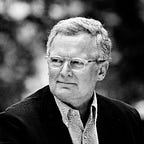A New Growth Theory
Resonance occurs whenever two things vibrate in tune. If you strike a tuning fork, an identical fork on the same table will begin to vibrate. Energy is exchanged between the forks. Resonance is such a powerful phenomenon that soldiers marching across a suspension bridge break stride just in case their coordinated marching should resonate with the natural vibrations of the bridge. If this occurred, the bridge would absorb the energy of the marching soldiers and the structure could even oscillate out of control and break.
Quantum theory says that each (quantum) entity has both a wavelike and a particle-like aspect. The particle-like characteristic is fixed but the wavelike one is a set of potentialities that cannot be reduced to the entity or its parts. If two or more of these entities are brought together, their potentialities are entangled. Their wave aspects are interwoven to the extent that a change in the potentiality in one brings about a corresponding change in the potentiality of the other. A new shared reality emerges that could not have been predicted by studying the properties of the entities.
The famous experiments with the fundamental entities of visible light have proven that we cannot claim that a photon is a wave or a particle until it is measured, and how we measure it determines what we see. “If you change the way you look at things, the things you look at change” as Max Planck put it.
The basic units of the industrial era were transacting entities enabled by market, price and coordination mechanisms. It was a world of particles separated from other particles.
As social innovation the enterprise as we know it, was born when the volume of economic activity reached a level that made administrative coordination more efficient and more lucrative than market coordination of these particles.
The important innovation of the modern firm was to internalize activities by bringing many discrete entities under one roof and under one system of coordination. The multi-unit business corporation replaced the small, single-unit enterprise because administrative coordination enabled greater productivity through lower (transaction) costs per task than was possible before.
Managers essentially carried out the functions formerly handled by price and market mechanisms.
The practices and procedures that were invented at the dawn of industrialism have become a standard operating system and are still taught in business schools. The existence of this managerial system is not questioned. It is the defining characteristic of the business enterprise.
But two aspects of work have changed dramatically.
The most successful firms are themselves multi-sided markets in interaction with entities “outside”, enabling interaction between customers and network partners. These firms are the new market platforms. It is now more expensive to internalize than to link and network.
Second, the products/services the platform firm sells to its clients are not offerings of the firm per se, but offerings created by specific network players in specific situations of “local” network interaction. Scale and scope are combined.
The new task is to understand network phenomena.
The mistake that is often made is to equate online marketplaces and the growth of the number of sellers and buyers with what is called network effects. The size of the network does not necessarily mean, or lead to, positive (network) effects, as Groupon, LivingSocial and many others have found out.
Thus, aiming to become a platform requires a vision that extends beyond one’s firm and aims to build and sustain an ecosystem where each network node benefits from more nodes joining the network. During the industrial era, economists called this phenomenon network “externalities”. Now it is more properly called network “effects”. This conceptually small difference represents a hugely important change in thinking.
What assets were for the industrial firm, network effects are for the post-industrial firm.
We all have mindsets of the world that serve as maps that guide what we see and how we understand the world around us. The maps can be helpful but also outdated and crucially incorrect. The approach that managers do the coordination is just too slow and too costly in the low transaction cost environments we live in.
Traditional business economics focuses on supply-side economies of scale derived from the resource base of the company. It scales much more slowly than the demand-side network effects the new firms are built on. Network effect-based value can increase exponentially at the same time as costs grow linearly, if at all. If you follow the valuations of firms today, there is an ever-widening gap between the network-economy platforms and incumbents driven by traditional asset leverage models. Investors and markets have voted.
People participate on the basis of transparent information and high-quality communication systems enabling “resonance”. The most important contributing individuals are not leaders/managers but customers and other network partners. The more of them that are in active resonance, the more assets there are. The big shift is from market transactions to network interactions.
The main mission of platforms is to make network effects possible.
Platforms are, so far, the best means to flourish and create growth in low transaction cost environments, the same way as the industrial firm was the best means to flourish and grow in high transaction cost environments.
Growth looks very different if we “change the way we look at things” from transaction cost economics to network effect economics.
